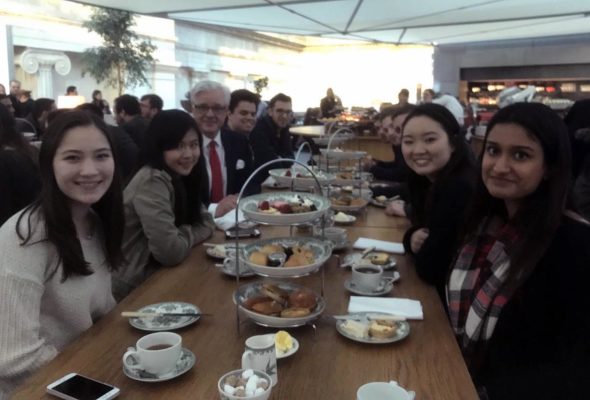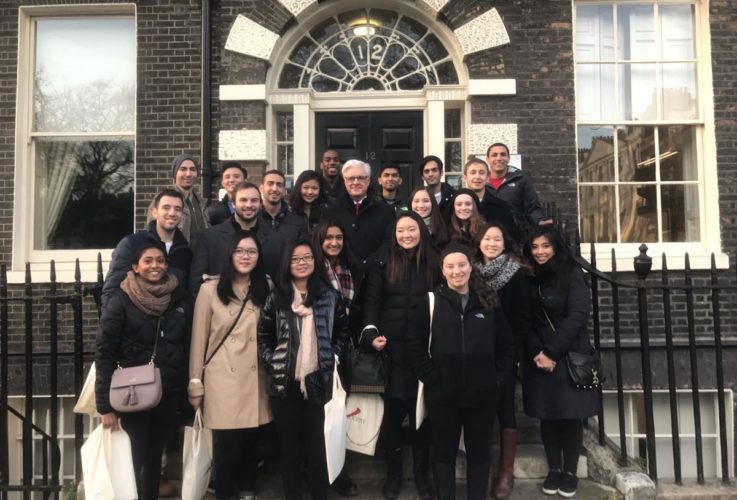I recently joined 28 Olin students beginning the London Internship Program for a time-honoured British tradition: afternoon tea.
It was the perfect way to start their five-month experiential education program, which involves coursework on international aspects of business, marketing and finance, analysis of the infrastructure and society of the UK, visits to other European countries, and a significant London-based internship.
While the students were eager to talk about the international business environment, they really wanted to know why tea is such a big deal in the UK. Here’s a quick Tea 101 to initiate Olin students (and other curious Americans) to afternoon tea in the UK:
Afternoon Tea or High Tea?
Drinking tea along with a selection of light food became fashionable among high society in England in the eighteenth century as a way of bridging the long gap between lunch and a traditionally late dinner, as well as providing a social gathering. By the late nineteenth century, however, as tea reduced in price, it became an everyday drink for all levels of society, so much so that workers’ evening meal, served with a cup of tea typically heavily laced with sugar, itself became referred to as tea rather than dinner. Because this meal was served on a high dining table, rather than on the lower tea tables of a fashionable salon, it was also referred to as ‘high tea.’ Today, however, hotels often refer to afternoon tea as high tea, presumably because ‘high’ suggests superior, but this is actually incorrect.

Dean Taylor treats Olin students to afternoon tea in London.
Milk poured into the cup before the tea, or after?
Milk in second: historically, it showed that you came from a family that could always afford expensive China cups that would not crack their glaze if hot tea was poured directly onto it.
Do I have to take milk in my tea?
No, it’s perfectly acceptable to take tea black or with a slice of lemon. Some teas, such as the smoky lapsang souchong, would not be served with milk.
Sugar?
It is acceptable to take a small amount of sugar if you wish, but more than one or two lumps would arouse curiosity.
White or brown sugar?
Somebody put brown sugar out on the table?
How do you eat scones, jam and cream?
Slice the scone through the centre to form two semicircles. Place a generous amount of jam on each side and then a dollop of thick cream on top. Eat each half separately.
What food should be eaten and in what order?
Light refreshments are typically served on a three-tier cake stand. On the bottom tier, there will be small finger sandwiches, typically cucumber or egg and cress salad on crustless white bread, and some bread and butter. Start with these savouries and progress with the scones, cream and strawberry jam from the second tier and top off with a slice of cake or some petits fours from the top tier. On no account dunk anything in your tea.
Are there many references to afternoon tea in English literature?
Yes. Many. Indeed, it’s hard to find an English work from the late eighteenth century that doesn’t reference tea in some way. A good place to start is with Oscar Wilde’s The Importance of Being Earnest, in which the whole first act is set around an afternoon tea party: it’s hilarious.



